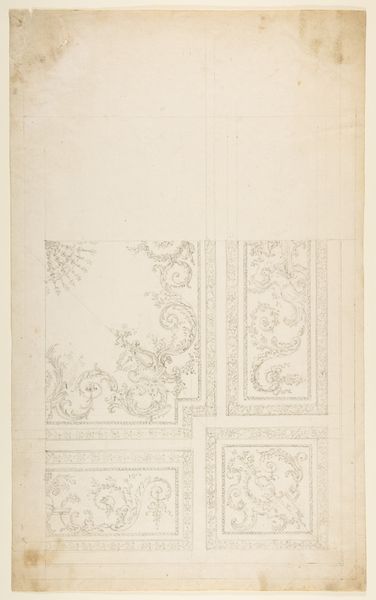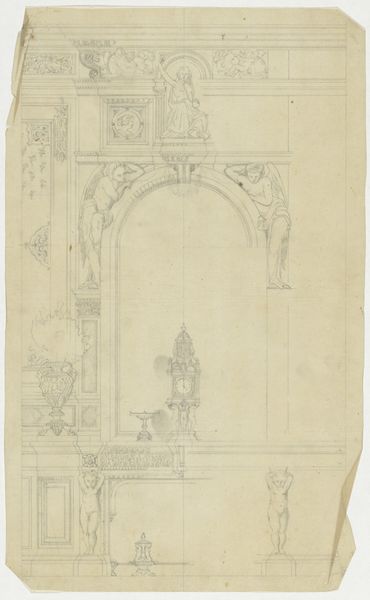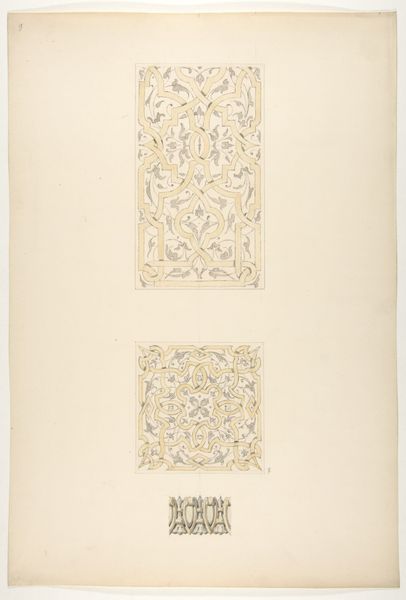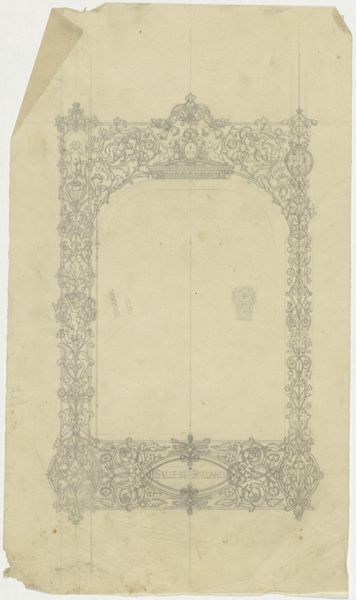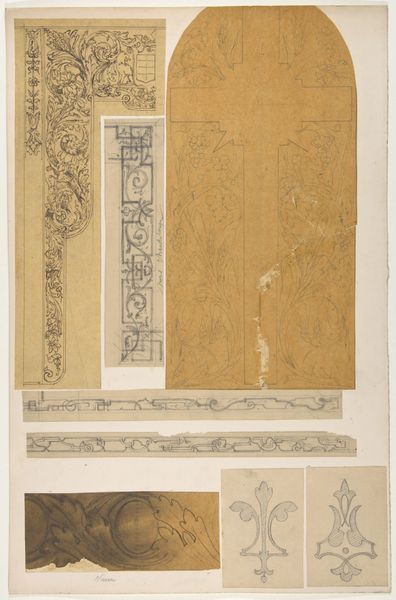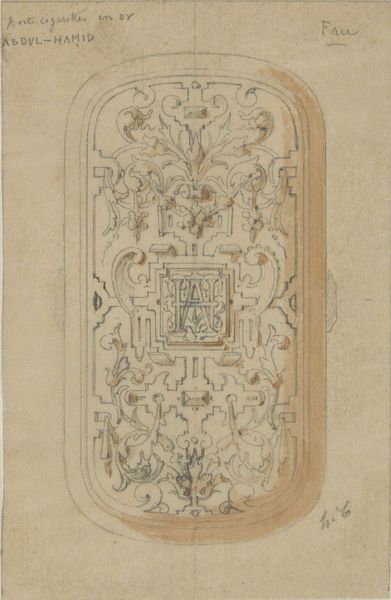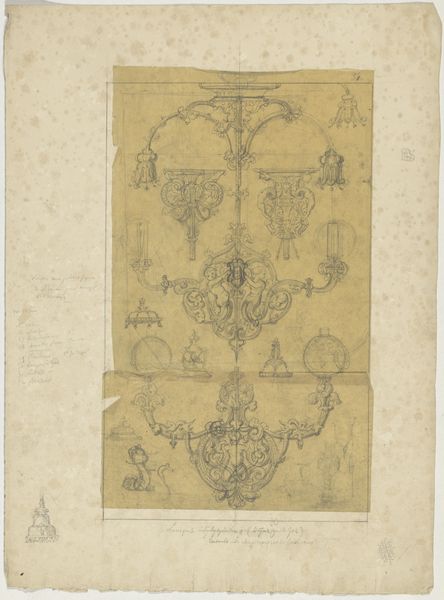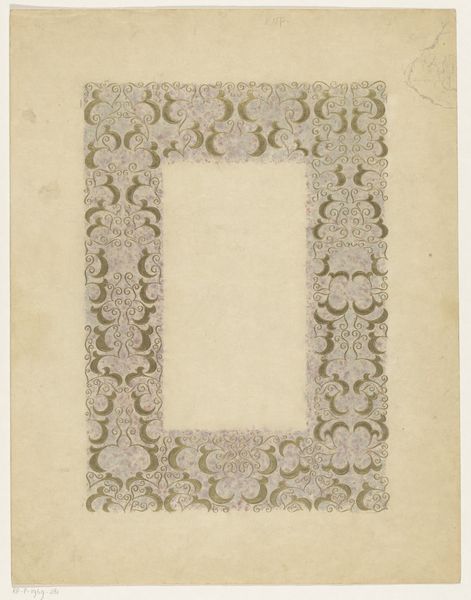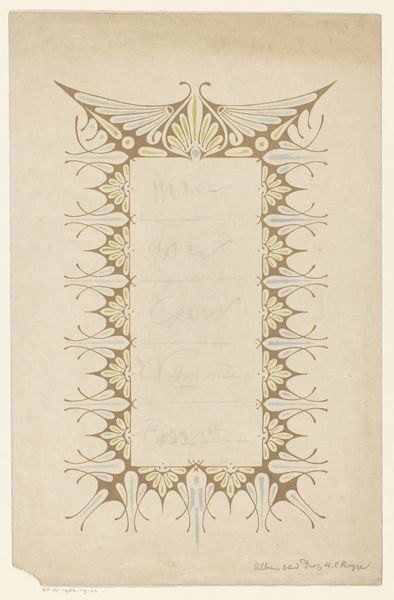
Design for the decoration of a wall in Islamic motifs 1850 - 1900
0:00
0:00
drawing, print, paper, ink, architecture
#
drawing
#
medieval
# print
#
pattern
#
paper
#
ink
#
geometric
#
line
#
islamic-art
#
decorative-art
#
architecture
Dimensions: sheet: 11 5/8 x 7 1/2 in. (29.5 x 19 cm)
Copyright: Public Domain
Curator: This intriguing piece is entitled "Design for the decoration of a wall in Islamic motifs" by Jules-Edmond-Charles Lachaise, dating roughly from 1850 to 1900. It’s a drawing executed in ink on paper and presently resides at the Metropolitan Museum of Art. Editor: The immediate effect is quite delicate, almost ephemeral. The pale lines create an intricate lacework effect across the page. It evokes a sense of serene, quiet contemplation. Curator: Precisely. The interplay of geometric and floral motifs reflects the sophistication of Islamic design principles. One notes the repeated patterns which invite meditation, and perhaps hint at the infinite. Islamic art often utilizes such designs to avoid direct representation, which some interpretations consider idolatrous. Editor: The use of geometry appeals to the intellect while the organic, flowing lines perhaps speak more to our emotions, hinting at natural forms even within a strictly controlled artistic environment. The architectural setting too anchors it, suggesting a dialogue between inner spirituality and the space in which we find ourselves. Does this represent an actual design intended for construction? Curator: Possibly. Many artists in the 19th century, particularly those involved in architectural and decorative projects, looked to historical styles, including Islamic art, for inspiration. These drawings often served as blueprints, presentation pieces, or simply as exercises in mastering a particular style. One cannot underestimate its function in defining a cultural space; the careful placement of the elements is suggestive of specific, symbolic associations. Editor: So its purpose was both aesthetic and perhaps pedagogical, contributing to a broader cultural conversation. It seems that Lachaise attempts to capture not just the visual elements, but also some intrinsic essence associated with Islamic identity during this period. What remains particularly fascinating to me is how, even in this relatively simple form, the design resonates with that deep sense of pattern recognition within all of us, tapping into universal aesthetics. Curator: Indeed, the artwork highlights how patterns are much more than decorative devices. They offer a glimpse into a belief system and structure human perception itself. Editor: And a subtle reminder about how intercultural exchange informs, transforms, and enriches art across time.
Comments
No comments
Be the first to comment and join the conversation on the ultimate creative platform.
